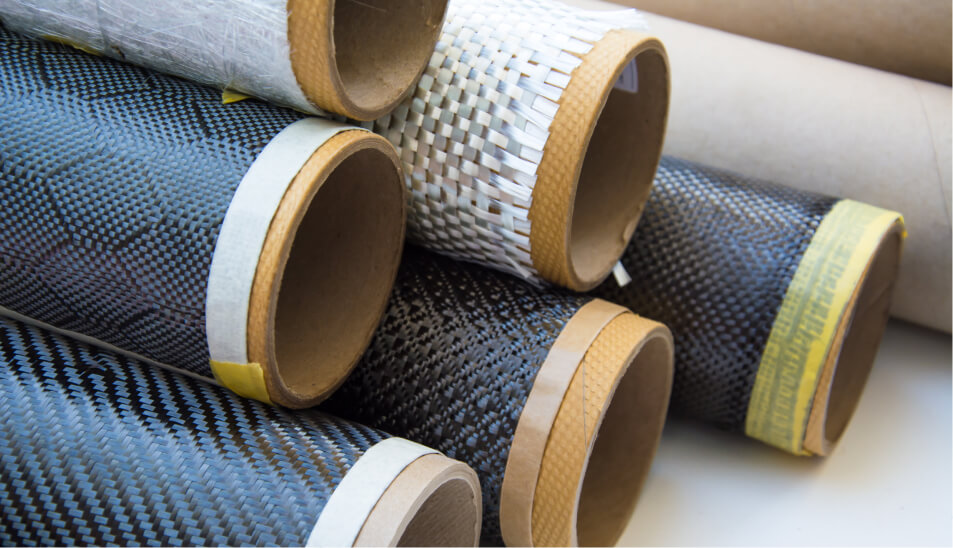In the realm of material science, composite materials represent a new benchmark in innovation and technological advancement. These materials, often simply referred to as composites, are engineered through the combination of two or more constituent materials with significantly different physical or chemical properties. When combined, they produce a material with characteristics distinct from the individual components.
GMS Composites are experts in developing, producing, and applying composite materials for a range of industries and applications. In this article, we’ll introduce you to what composite materials are, how they can be applied, and why they’re changing the game.

Understanding Composite Materials: Definitions and Basics
What are composite materials, and what does composite mean?
At its core, a composite material is a synergistic combination. The term ‘composite’ describes how different materials come together to form a new material with enhanced properties. Each constituent material retains its separate identity in the composite, distinguishing it from a blend or a mixture.
Common examples include fibreglass, reinforced concrete, and plywood. In these composites, one material forms the ‘matrix’, which holds together fibres or fragments of the other material, known as the ‘reinforcement’. The interplay between these components results in a composite material that boasts improved strength, durability, or other desirable properties not attainable by the individual constituents alone.
Innovations in Composite Materials: Pioneering a New Era
The field of composite materials is continually evolving, with research and innovation driving new applications. The advancement in this sector is not just about finding new combinations of materials; it’s also about enhancing the way these materials interact and are processed. Innovations such as nanocomposites, which incorporate nanosized particles into the matrix, are pushing the boundaries of material performance. The advent of smart composites, which can sense and respond to environmental changes, is another area showing remarkable progress.

Diverse Applications of Composite Materials Across Industries
Composite materials have found their way into an array of industries, revolutionising how things are built and designed.
In the aerospace sector, composites are valued for their strength-to-weight ratio, playing a crucial role in the construction of aircraft and spacecraft.
The automotive industry utilises these materials for both structural and aesthetic purposes, achieving efficiency and design flexibility.
In the world of sports, composites have led to lighter, more durable equipment, enhancing athletic performance and leading to record-breaking achievements.
The construction sector is constantly pushing the boundaries of performance and design, and advanced composite materials are playing an ever-larger role in making this possible. Lighter, stronger, and more flexible materials allow for projects previously thought impossible to be realised.
How are innovations in composite materials shaping various industries?
Innovations in composites have become a driving force across various sectors. In the automotive industry, for instance, the push for fuel efficiency and lower emissions has led to the adoption of lightweight composite materials. In the energy sector, wind turbine blades made from advanced composites have enabled more efficient energy capture.
These innovations are not just enhancing existing products but are also paving the way for entirely new applications, like bendable electronics and advanced biomedical devices.
The Future of Composites: Emerging Trends and Predictions
The future of composite materials is bright and filled with potential. One of the key trends is the increasing focus on sustainability. Researchers are exploring bio-based composites, which use natural fibres and resins, to create environmentally friendly alternatives. Another trend is the integration of composites with 3D printing technology, which opens up possibilities for complex, customised designs that were previously impossible or too costly to produce.
Another is the development of custom materials for applications requiring specific levels of performance, weight, fire resistance, or other properties. GMS Composites’ partnerships with cutting-edge research and development facilities and global distribution network allow us to develop and produce bespoke solutions to your material needs.
The Composite Advantage
The world of composite materials is a dynamic and ever-evolving field, brimming with possibilities. Constant innovation and development is pushing industries forward, redefining previously-imagined possibilities and allowing dreams to be realised.
To see how you can benefit from implementing composite materials, contact us today.
Frequently Asked Questions
What are composite materials, and what does composite mean?
A composite material is a synergistic amalgamation where different elements unite to create a new substance with superior attributes. Unlike blends or mixtures, each component maintains its distinct identity within the composite. One element acts as the ‘matrix’, binding the fibres or fragments of another, the ‘reinforcement’. This interaction yields a composite with enhanced strength, durability, and other properties unachievable by the constituents independently.
How are innovations in composite materials shaping various industries?
Innovations in composite materials allow for lighter, stronger, and more durable materials. These make previously impossible projects which would have required materials that just didn’t exist yet – taller buildings in different shapes, higher-performance vehicles, and increased energy efficiency in wind turbine blades, to name only a few.
How does GMS Composites ensure precision & quality in their products?
GMS Composites’ partnerships with advanced research & development facilities around the world allow them to produce and test cutting-edge products. Our rigorous quality assurance process ensures all GMS products are held to the highest possible standard.
